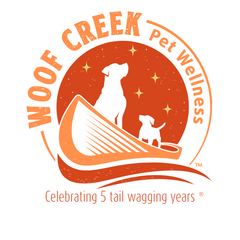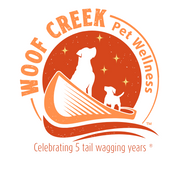Why Pets Need Pest Prevention Year-Round

As the leaves start to change and temperatures drop, many pet parents relax when it comes to flea and tick prevention. The logic is understandable: pests seem less active during cold spells. But the truth is, fleas and ticks don’t fully disappear, even in colder climates, and letting your guard down can lead to itchy, uncomfortable encounters for your furry kids..
Why Fleas & Ticks Remain a Threat in Cooler Weather
In many regions, especially warmer or temperate areas, fleas and ticks stay active year-round. A few warm days or pockets of milder weather are enough for them to roam. Places like Florida, where Woof Creek is headquartered, Texas, and parts of the Southeast have minimal winter cold. The pests there don’t face the setbacks that colder winters impose elsewhere.
Even when it’s cold outdoors, our pets spend more time indoors, often in heated environments. Fleas love carpets, pet bedding, upholstery, baseboards—any cozy, humid micro-environment where they can hide. Ticks can hitch rides on people, other pets, or wildlife and make themselves cozy inside once they’re brought home.
Flea bites can lead to allergic reactions, skin irritation, secondary infections, and even tapeworms if fleas are ingested during grooming. Ticks can transmit diseases such as the commonly known Lyme disease.
Letting your preventive routine lapse increases chances of exposure. Even in colder temperatures, continuing your pet’s natural pest prevention routine is a proactive way to ensure their continued health and wellness.

What “Natural Pest Prevention” Means (and Why It Can Be a Safer, Sustainable Route)
Woof Creek approaches pest prevention with a holistic view—building up a pet’s natural defenses rather than relying solely (or indefinitely) on chemical methods. Here’s what this looks like for our own pets:
-
Using superfood/functional mushroom blends and whole food supplements to support skin health, immune strength, and to create internal environments less hospitable to pests.
-
Topical sprays made with natural essential oils and botanical repellents (neem, lemongrass, peppermint, etc.) to add external defense.
- Being mindful: Treating your home and yard, avoiding higher-risk areas (such as staying on trails and out of high grass or leaf piles), and staying vigilant about checking pets after outdoor time.
Tips for Keeping Up Prevention Through Fall & Winter
-
Continue using prevention even when you think pest activity has dropped. Reducing doses rather than stopping altogether can help keep the pest-preventing benefits in your pet’s system.
-
Be extra vigilant after mild spells, rain, or warm nights—these are times when pests are likely to pop up.
-
Regularly check your pet, paying special attention to their ears, paws, belly, tail, and armpits. Ticks are tricky; they like warm damp areas.
-
Clean and wash bedding, vacuum carpets, and consider natural treatments for yards (if applicable) so eggs or larvae don’t build up indoors or outdoors.
-
Use natural repellents, like our Flea + Tick Defense Spray, before outdoor walks or hikes, and after exposure.
Pest season doesn’t magically end when summer does. Fleas and ticks are opportunistic, and even a short lapse in prevention can lead to discomfort for your fur kids. By combining internal support with external protection—and maintaining consistent habits and awareness, you keep your pet safe, comfortable, and healthier through every season.










